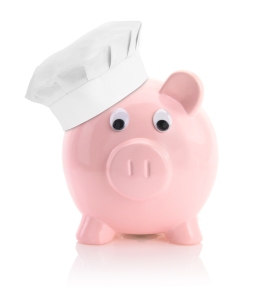Research says it takes twenty-one days to implement a new habit. And yet, when you start to consider all of the bad habits you may have developed, you may not know where to start!
Sometime over the next day or so, take twenty minutes to create a list of habits you want to add in or take out of your life. Prioritize them. Work on one habit at a time.
My job as a Nutritionist is to help my clients form healthier eating habits that will enable them to make better food choices. Below is a list of five questions that I ask my clients to help them improve their eating habits.
1. When did you last eat? If it’s been longer then 2–4 hours, it’s time to eat! When you wait too long between meals, you’re more likely to overeat.
This is key for me. I need to eat every 3 hours otherwise my blood sugar drops and the irritability kicks in. If I leave it too long, I make bad choices and my son’s treat bag or that loaf of bread starts to look really tempting. If I don’t have much time, I will always make a smoothie to eat then, or save in the fridge for when I need it. This is great for a mid-afternoon or mid-morning slump!
2. Where is the complete protein?
Does your meal or snack include protein? If not, find a healthy source, such as lean meat or fish, eggs, cottage cheese, edamame, a serving of protein powder, or even a few tablespoons of hemp seeds– which contain approximately 10 grams of protein per 2 tablespoons. See my recipe below for Vegetable Frittatas, these are great for lunch or dinner!
3. Where are the veggies (preferably green ones)?
Does your meal or snack include at least a cup of raw or a half a cup of cooked vegetables? Have them raw, steamed, baked, grilled or stir fried, but make sure you have at least five servings per day. An easy way to bump up your green veggie intake is to add a cup of romaine, spinach or kale to your smoothies. Raw veggies & hummus makes a great snack or prepare a yummy salad for lunch.
4. Where are the carbs?
If you have fat to lose, make sure that the carbs you are choosing are high-fibre, low-sugar carbs. Choose beans or lentils instead of bread, rice, pasta, or potatoes. If you do choose bread, make sure it is 100% whole grain and has between 3-5g of fibre per serving.
5. Where are your fats coming from?
Get your healthy fats from sources, such as olive oil, olives, avocado, and even chia or flaxseeds. You need to have a modest amount of fat throughout your day. Healthy fats are essential for your health and also help to keep you feeling satisfied.
Hopefully you are all feeling motivated to start changing those old habits! But remember, don’t try too much at once. Start with baby steps. Make a list of three new food or lifestyle goals you will implement over the course of the next six weeks. Focus each goal on one behavior you need to either extinguish or add into your life. Post a comment with the habits you want to change, I would love to hear from you.
Good luck!
Vegetable Frittata Cups
Makes 4 servings
1 tbsp extra virgin olive oil
1 red onion, halved, thinly sliced
½ cup pepper, cut into short thin strips
1 clove garlic, crushed
½ cup frozen baby peas
10 pieces semi-dried tomatoes, finely chopped
7 eggs
½ cup unsweetened soy milk
salt and black pepper to taste
- Preheat oven to 375 F.
- Heat oil in a large, non stick frying pan over medium-high heat.
- Add the onion, pepper, baby peas, and garlic. Cook, stirring often, for 5 minutes.
- Add the peas and cook for 3 minutes.
- Remove from the heat and set aside to cool a little.
- Stir in the semi-dried tomatoes.
- Using an oil mister, spray a large 6 cup muffin pan with oil.
- Whisk together the eggs and milk, and season.
- Divide the vegetables among the 4 muffin pan cups. Pour the egg mixture evenly over the vegetables.
- Bake for about 20-25 minutes, or until frittatas are set and lightly golden.
- Set aside in the pan for 10 minutes before turning out.
Melanie Grime is a holistic nutritionist serving the Orangeville, Dufferin, Wellington, and Caledon areas. Melanie treats everyone as an individual with their own specific needs and helps clients suffering from health issues by looking for the root cause of symptoms and working with them to reach their health, nutrition & weight loss goals





